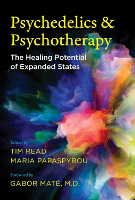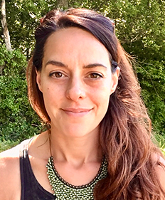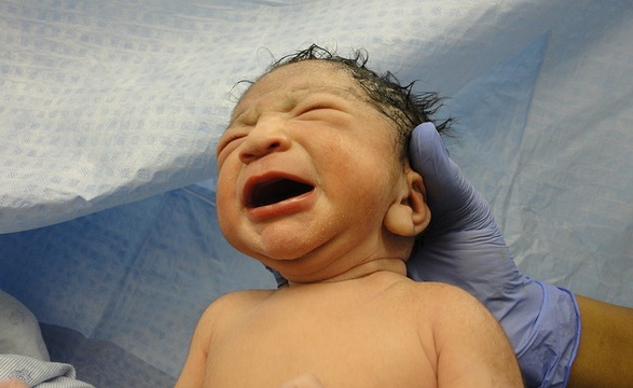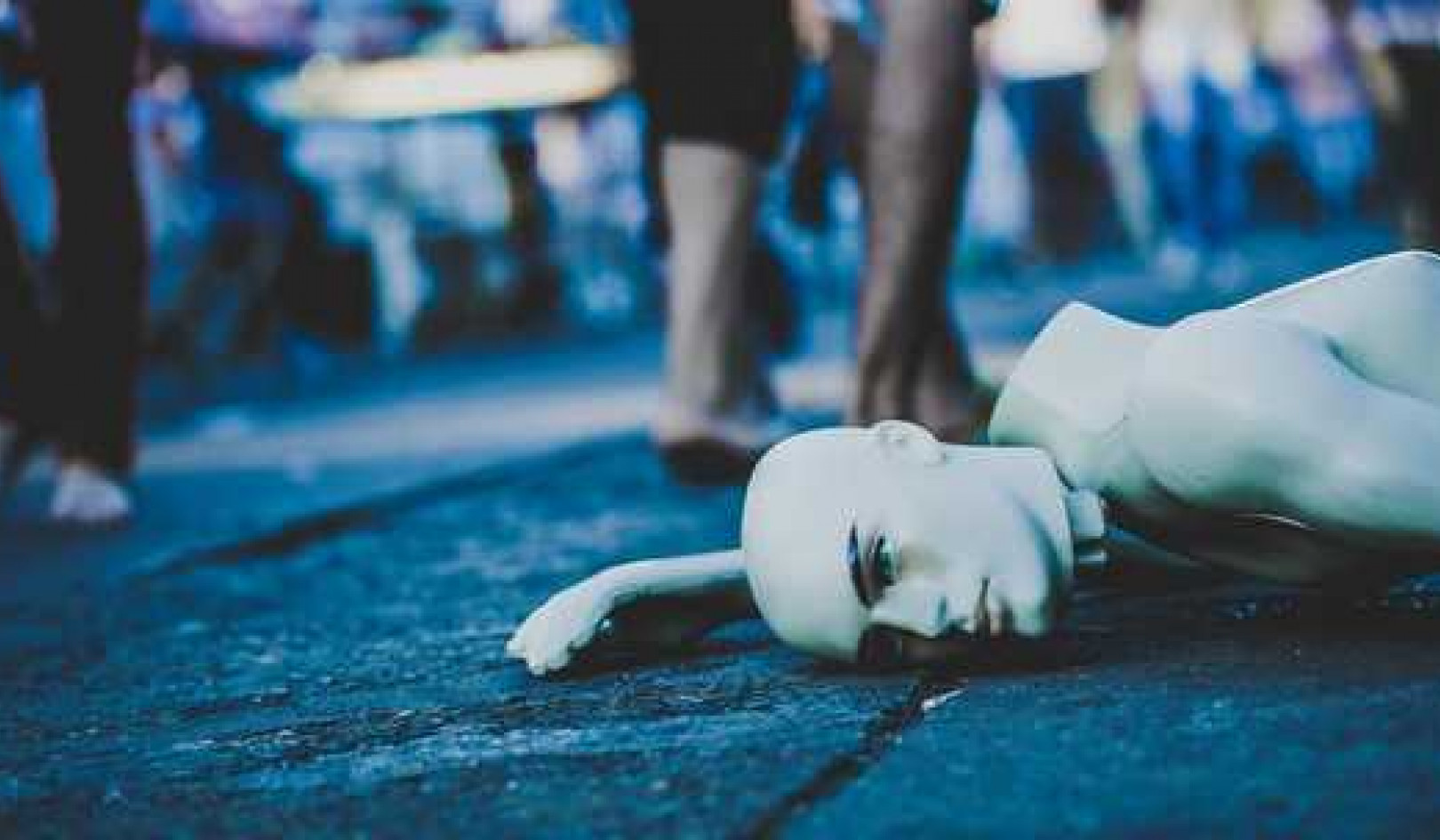In this Article:
- The connection between birth trauma and our deepest wounds
- How expanded states of consciousness can help in healing birth trauma
- Insights from Stanislav Grof’s perinatal model on trauma
- The transformative power of re-experiencing birth in a supported setting
- How deep wounds and traumas can become allies through healing processes

Is Our Deepest Wound Our Birth Trauma?
by Tim Read.
Expanded states of consciousness often hold deeply positive feelings of connection, compassion, and the sheer joy of being alive. Our concerns may be radically changed by new perspectives: our creative instincts are renewed, and we may gain insights into the essential nature of things.
But to get to this point, we may traverse some difficult territory involving the wounds that inevitably lie in the deeper parts of our psyche and the defenses that we have built over them. In an unsupported setting, these wounds may take the form of a challenging psychedelic experience that feels unwelcome. But in a supported setting, the aim is to welcome this unconscious material so that it can be made accessible to processing and thus lose its destructive power. This processing may happen in a number of ways, and it may take successive exposures before the wound is fully experienced and resolved.
Some of these wounds may never entirely resolve; it is more a matter of ongoing management so that the dangers lurking in the dark recesses of our psyche become known quantities that have lost their charge. We no longer need to live our lives defined by the defenses we have constructed against them. Our deep wounds may even become our allies.
How Our Deep Wounds May Become Our Allies
For this to occur, we need to go repeatedly to the deep well. We need the courage to surrender to those parts of ourselves that we have always defended ourselves against. We need to not only visit these places but immerse ourselves and fully reexperience them.
The gift of psychedelics—and this is dose dependent—is that this layer of psyche, where our deepest wounds lie, becomes available. But when it does so, we do not touch it lightly. We feel it deeply; we go to its visceral depths. We need to have faith that the medicine that sometimes tastes so bitter is actually good for us if handled skillfully.
As therapists, guides, and sitters, we need to know this territory so we can support those who follow. The way in which we engage with our clients to prepare the set and setting needs to anticipate working with them in these challenging states where the healing opportunities are most precious.
We need strategies to work with people in the deep so that their experiences can be usefully integrated after the psychedelic experience is concluded. In entering this archetypally charged territory with our clients, we may be triggered in ways that reopen our own wounds, and we need to have ways of working with this too.
Modern psychoanalytic models focus on the vicissitudes of the early relationship with the nursing mother and the importance of attachment patterns. Indeed, in any work with people in expanded states we need a quality of facilitator presence that is more like a mother tending her infant. The qualities required are of absolute compassion, attunement, and gentleness while rooted in strength and the ability to manage the safety of the setting. As facilitators, we need to hold those maternal qualities of holding and containment, where we can tolerate and metabolize any primitive material that is expressed, while providing the secure base that so often allows for corrective experiences around unresolved attachment issues.
Experiencing Our Deepest Wounds in Expanded States
In expanded states we may have experiences to which we cannot attach a narrative because they lie beyond conscious memory. These unconscious psychic residues, which often affect us powerfully in adult life, arise at the earliest stages of our development, and it is helpful to have some models of how such mental structures arise and how to work with them.
The idea of primitive traumas arising very early in our lives playing a formative role in adult personality and relationships is in tune with the key ideas from psychoanalysis. The object relations school developed by Melanie Klein (1959) found that the deepest roots of our personality development lay in infantile relationships with the primary object, the nursing mother.
Here the traumas are more often psychological rather than physical, but the emotional world of an infant has an extraordinary visceral intensity, indeed an archetypal quality, that shapes the developing ego structures and leaves a powerful residue in the adult psyche.
Stanislav Grof, the pioneer of LSD psychotherapy, found that in therapeutic LSD sessions an even earlier layer of psyche was exposed and this led to the development of his influential perinatal model based on the short-lived but utterly traumatizing experience of our birth.
The Baby's Birth Trauma: A Life-Threatening Journey
From the perspective of the baby, this process involves both a profound rejection by mother and a life-threatening journey through the birth canal. Not only is paradise lost as the primal unity of life in utero comes to an end, but it feels like a murderous attack as the uterus violently contracts. As the uterine existence dies, there follows the heroic journey toward a rebirth in an unimaginably new world. Grof described four distinct phases of this perinatal process:
The first basic perinatal matrix:
BPM I is the uterine state that lasts until the onset of labor. The baby develops peacefully in the amniotic sac with all her needs met by the encompassing and nourishing mother. Occasionally, this resting state becomes poisonous due to medication, metabolic toxins, or lack of oxygen.
From an archetypal perspective, good-womb experiences would equate to oceanic feelings of bliss, connection, and cosmic unity. A toxic womb state will trigger toxic emotions, perhaps feeling drugged, poisoned, or paranoid.
The second perinatal matrix:
BPM II is the physical onset of labor where the uterus contracts against a closed cervix. There is no available exit, and the baby is being crushed, so this state involves an experience of constriction, entrapment, and fear; the paradise of the good womb is lost, and the baby faces death. Experientially, there is profound hopelessness and despair.
The third and fourth perinatal matrices form the basis of the death-rebirth dynamic:
BPM III represents the physical process of movement from the contracting uterus through the opening cervix, followed by the “life or death struggle” through the birth canal. This is the archetypal hero’s journey, the call to arms, the tumultuous and perilous struggle.
BPM IV is the birth: the sudden dramatic emergence into a new life, the first intake of breath, and the recovery phase for mother and baby. The ordeal is over, and they can meet each other for the first time in the outside world. From an archetypal perspective, there may be themes of triumph and deliverance, new horizons, revolution, decompression and expansion of space, radiant light and color. For others it may be experienced more as a devastating loss of their fusion with mother and their emergence into an alien and threatening world.
Birth: Our Deepest Root of Trauma
Grof found in his clinical work with LSD and Holotropic Breathwork that our deepest root of trauma springs from this perinatal process, and this becomes the primary template around which we organize our subsequent development. If these formative traumas loom large in our psyche, then we unconsciously attract events and relationships that reenact the emotional tone of our formative traumas.
The significance of the perinatal layer of psyche lies in its extraordinary duration, intensity, and violence both on an emotional and a physical level. Very few people will have experienced anything approaching this level of physical violence and annihilatory anxiety in the remainder of their lives. It is not surprising that opening to this layer of psyche in an expanded state is often experienced as torture or death.
To summarize Grof’s conclusions:
- The birth process leaves its residue in adult psychological structures.
- The embodied memory of the birth process can be accessed in expanded states of consciousness.
- Working through perinatal issues can provide relief from a number of psychological and somatic ailments.
- These experiences have an archetypal quality.
- Accessing this perinatal layer in an expanded state can act as a portal to transpersonal experience.
Copyright 2021. All Rights Reserved.
Adapted with permission of the publisher
Park Street Press, an impring of Inner Traditions Intl.
Article Source:
BOOK: Psychedelics and Psychotherapy
Psychedelics and Psychotherapy: The Healing Potential of Expanded States
edited by Tim Read and Maria Papaspyrou.
 Exploring the latest developments in the flourishing field of modern psychedelic psycho-therapy, this book shares practical experiences and insights from both elders and newer research voices in the psychedelic research and clinical communities.
Exploring the latest developments in the flourishing field of modern psychedelic psycho-therapy, this book shares practical experiences and insights from both elders and newer research voices in the psychedelic research and clinical communities.
The contributors examine new findings on safe and skillful work with psychedelic and expanded states for therapeutic, personal, and spiritual growth. They explain the dual process of opening and healing. They explore new approaches for individual inner work as well as for the healing of ancestral and collective trauma.
For more info and/or to order this book, click here. Also available as a Kindle edition and an Audiobook.
https://www.amazon.com/exec/obidos/ASIN/1644113325/innerselfcom
 About the Author
About the Author
Maria Papaspyrou, MSc, is an integrative psychotherapist, supervisor, and family constellations facilitator. She has given talks and published articles on the sacramental and healing properties of entheogens, supporting their re-introduction in psychotherapy. She is co-director of the Institute of Psychedelic Therapy in the UK.
Article Recap:
This article by Tim Read explores the profound impact of birth trauma on our psyche and how expanded states of consciousness can be a pathway to healing these deep wounds. The discussion is anchored in Stanislav Grof's perinatal model, which suggests that our birth experience leaves a lasting imprint on our psychological structures. By accessing these early traumas in a supported setting, individuals can work through unresolved issues, leading to a transformative healing process. The article also highlights how these experiences can open the door to transpersonal insights and personal growth.



























